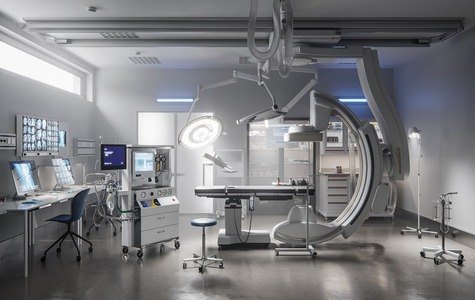- Medical Devices
- Thursday, 28 Dec 2023
Auditory Brainstem Implant Market is expected to reach US$ 114.67 million by 2030
According to our new research study on “Auditory Brainstem Implant Market Size and Forecast to (2020–2030), Global and Regional Analysis – by Component, Age Group, Application and End User,” the auditory brainstem implant market is expected to grow from US$ 61.19 million in 2022 to US$ 114.67 million by 2030; it is estimated to register a CAGR of 8.2% from 2022 to 2030. Key factors driving the market growth include growing prevalence of sensorineural hearing loss and technological advancements in ABI devices. However, the high costs of surgical treatments and limited reimbursement policies hamper the market growth.
An auditory brainstem implant (ABI) is a device similar to the cochlear implant (CI) that is used to provide hearing perception to children and adults with hearing disabilities. Unlike CIs, the ABI directly stimulates the second order neurons of the cochlear nucleus. This stimulation can help patients who cannot receive a CI or have retrocochlear deafness, such as those with NF2, to regain their auditory abilities.
Auditory Brainstem Implant Market, by Geography, 2022 (%)
To get free sample copy of the report, along with the TOC, Statistics, and Tables please visit @ https://www.theinsightpartners.com/sample/TIPRE00035303
Source: The Insight Partners Analysis
As per the statistics published by the Centers for Disease Control and Prevention (CDC) in August 2023, over 98% of infants in the US were checked for hearing loss and ~ 6,000 newborns born in 2019 were diagnosed with irreversible hearing loss at birth. According to an article published by Sage Journals in September 2021, a study aimed to longitudinally compare the accuracy of word productions in spontaneous speech between children with normal hearing, children who received a cochlear implant, and those with ABI was conducted. The findings showed that the phonemic accuracy of the children with ABI improved but remained considerably lower than that of children who did not have hearing impairment and those with cochlear implants. Additionally, the analysis revealed that there was considerable individual variation among the children with ABI. Therefore, the growing number of studies showing positive outcomes of the ABI application in pediatrics is expected to create opportunities in the auditory brainstem implant market during the forecast period.
The report profiles important players operating in the global auditory brainstem implant market. Cochlear Limited, Med-EL, Oticon Medical, Zhejiang Nurotron Biotechnology Co. Ltd., and Sonova Holding AG are among the key companies operating in the auditory brainstem implants market.
The companies have been implementing various strategies that contributed to their growth and led to various changes in the market. The companies utilize organic strategies such as launches, expansion, and product approvals and inorganic strategies such as product launches, collaborations, and partnerships.
In January 2022, Cochlear Americas Corporation received FDA approval for its Nucleus 24 Cochlear Implant System. This approval broadens the usage of this device in individuals aged five years and above who have severe to profound hearing loss in one ear [also known as single-sided deafness/unilateral hearing loss (SSD/UHL)] and normal hearing or mild hearing loss in the other ear.
The report segments the global auditory brainstem implants market as follows:
Based on component, the auditory brainstem implant market is segmented into microphone, decoding chip, and electrodes. The microphone segment held the highest market share during 2020–2030.
Based on age group, the auditory brainstem implant market is bifurcated into adults and pediatrics. The adults segment is anticipated to hold a larger revenue share in the global market during 2022–2030. This is due to the increasing incidence of congenital profound hearing loss with anomalies in adults worldwide, which results in rising number of auditory brainstem implantation surgeries. For severe Sensorineural Hearing Loss (SNHL) patients who are ineligible for auditory nerve surgery or have scarring of the inner ear caused by trauma or infection, auditory brainstem implant surgery is expected to be extremely effective.
Based on application, the auditory brainstem implant market is bifurcated into sensorineural hearing loss and conductive hearing loss. The sensorineural hearing loss segment held a larger market share in 2022.
The auditory brainstem implant market, based on the end user, is categorized into hospitals, ENT clinics, and ambulatory surgical centers. The hospitals segment will register the highest CAGR in the market during 2022–2030. Auditory brainstem implants involve complicated surgeries that need specialized medical attention, including diagnosis, treatment, and ongoing monitoring. Hospitals play an essential role in delivering complete healthcare services to patients.
The auditory brainstem implant market, based on geography, is segmented into North America (the US, Canada, and Mexico), Europe (Germany, France, Italy, the UK, and the Rest of Europe), Asia Pacific (Australia, China, Japan, India, South Korea, and the Rest of Asia Pacific), the Middle East & Africa (South Africa, Saudi Arabia, the UAE, and the Rest of Middle East & Africa), and South & Central America (Brazil, Argentina, and the Rest of South & Central America).
Contact Us
Contact Us: The Insight Partners
Phone: +1-646-491-9876
Email Id: sales@theinsightpartners.com
Related Industry Updates
Europe Autotransfusion Devices Market Share and Growth Factors Impact Analysis 2027
Feb 17, 2021
Astellas Commits to Fund Boston-area Start-Up Innovation with Nearly $13 Million
Oct 10, 2019
Biomedical Materials Market Growth Analysis, Insights and Regional Outlook, Forecast Report 2028
Mar 29, 2023
Gastric Balloon Market to double up by 2027 US$ 152.1 Mn
Aug 23, 2019
Medtronic Announces U.S. Commercial Launch of Solitaire X Revascularization Device in US
Aug 29, 2019
Asia Pacific Autotransfusion Devices Market is expected to reach US$ 330.88 Million by 2027 with CAGR of 4.7%
Nov 20, 2020
Prostate Specific Antigen (PSA) Blood Based Biomarker Market Key Manufacturers, Development Trends and Competitive Analysis
May 11, 2021
